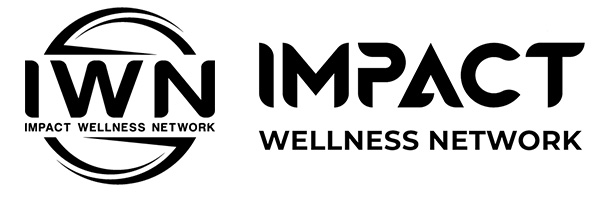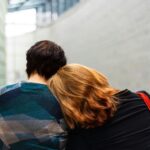The opioid crisis has evolved into one of the most significant public health challenges in recent decades. Opioid addiction affects individuals from all walks of life, straining healthcare systems and families.
However, there is hope in the form of Medication-Assisted Treatment (MAT), which has proven to be an effective and compassionate approach to addressing opioid addiction. In this comprehensive blog post, we will delve into the world of MAT, its principles, different medications, and the critical role it plays at the heart of opioid clinics.
Understanding Opioid Addiction
Before delving into MAT, it’s crucial to grasp the nature of opioid addiction. Opioids, including prescription pain medications like oxycodone and illicit drugs like heroin, have a profound impact on the brain. They attach to specific receptors in the brain, releasing excessive amounts of the neurotransmitter dopamine, which is associated with pleasure and reward.
This surge of dopamine creates a euphoric feeling, making opioids highly addictive. With repeated use, the brain starts to rely on opioids to release dopamine, leading to physical and psychological dependence.
Neurological Changes
Repeated opioid use leads to substantial neurological changes. The brain adapts to high levels of dopamine by reducing its natural production, resulting in a persistent desire for opioids to maintain pleasurable feelings.
Tolerance and Withdrawal
Opioid tolerance develops over time, requiring individuals to use more of the substance to achieve the same effect. When opioids are removed, withdrawal symptoms occur, making it exceedingly difficult to quit.
Psychological and Social Factors
Opioid addiction is not purely a physiological issue. Psychological factors like stress, trauma, and mental health conditions can both contribute to and result from addiction, complicating the picture.
Medication-Assisted Treatment (MAT)
MAT is a comprehensive approach to treating opioid addiction. It combines evidence-based medications with counseling and therapy, offering a holistic solution that addresses the physical, psychological, and social aspects of addiction. MAT is based on the following principles:
- Individualized Treatment: MAT recognizes that addiction affects each person differently. Therefore, treatment plans are tailored to the individual’s unique needs, ensuring a personalized approach to recovery.
- Medication Component: MAT utilizes FDA-approved medications that target the brain’s opioid receptors. These medications help reduce cravings and withdrawal symptoms, making it more manageable for individuals to focus on their recovery.
- Behavioral Therapy: Counseling and therapy are an integral part of MAT. Behavioral therapy, such as Cognitive-Behavioral Therapy (CBT) and Contingency Management, addresses the psychological aspects of addiction, helping individuals develop coping strategies, identify triggers, and build essential life skills.
- Whole-Person Approach: MAT recognizes that addiction affects the entire individual. Therefore, holistic approaches like yoga, meditation, and mindfulness practices are incorporated to promote overall well-being and recovery.
Different Medications in MAT
Several FDA-approved medications are used in MAT to address opioid addiction effectively. Each of these medications works in slightly different ways to reduce cravings and withdrawal symptoms:
- Methadone: Methadone is a long-acting opioid agonist that reduces cravings and withdrawal symptoms. It has been a cornerstone of MAT for decades, offering a stable and controlled substitute for the more potent opioids.
- Buprenorphine: Buprenorphine is a partial opioid agonist, meaning it produces weaker effects than full agonists like heroin or oxycodone. It can help reduce cravings and withdrawal symptoms without producing the intense “high” associated with other opioids.
- Naltrexone: Naltrexone is an opioid antagonist. It works by blocking the effects of opioids, making it impossible to achieve a high from using them. Naltrexone is available in an extended-release form, providing longer-lasting protection against opioid use.
- Naloxone: Naloxone is an opioid antagonist used primarily in emergencies to reverse the effects of an opioid overdose. It is also sometimes used in MAT to prevent relapse and reduce cravings
The Role of MAT in Opioid Clinics
MAT serves as the heart of opioid clinics, playing a central role in helping individuals overcome addiction. Here’s why MAT is indispensable:
- Reducing Cravings and Withdrawal: MAT is incredibly effective in reducing the intense cravings and withdrawal symptoms that often drive individuals back to opioid use. This relief allows people to concentrate on the recovery process.
- Increasing Treatment Engagement: MAT can lead to increased engagement and retention in treatment programs. Individuals are more likely to stay committed to their recovery journey when MAT is integrated into their treatment plan.
- Addressing Co-Occurring Disorders: MAT provides a comprehensive approach that addresses co-occurring mental health disorders, a common concern among individuals with opioid addiction.
- Lowering Mortality Rates: MAT is associated with a significant reduction in mortality rates, particularly from opioid overdose. It helps prevent fatal overdoses by blocking the euphoric effects of opioids or providing a controlled substitute in a controlled environment.
- Improving Quality of Life: MAT not only assists individuals in quitting opioids but also helps them regain stability in their lives, rebuild relationships, and improve overall quality of life.
- Reduction in Illicit Drug Use: MAT can lead to a substantial reduction in illicit drug use. As individuals stabilize on medications like methadone or buprenorphine, they are less likely to use other opioids.
The Effectiveness of MAT
The effectiveness of MAT is supported by a wealth of research and evidence. Studies consistently show that MAT:
- Reduces Opioid Use: MAT helps individuals significantly reduce or completely stop their use of opioids, increasing the likelihood of abstinence.
- Improves Social Functioning: MAT enhances overall social functioning, helping individuals rebuild their lives and relationships.
- Reduces Criminal Activity: MAT is associated with a reduction in criminal activity, improving the overall well-being of individuals in treatment.
Challenges and Stigma
Despite the proven effectiveness of MAT, challenges and stigma persist. Some of the challenges include:
- Access to Treatment: Not everyone has equal access to MAT. Geographic, financial, and systemic barriers can limit access to these life-saving treatments.
- Stigma: Stigma associated with MAT and the belief that it’s simply replacing one addiction with another can discourage individuals from seeking treatment.
- Regulatory Restrictions: MAT medications are subject to regulatory restrictions, requiring individuals to access them through specialized programs and clinics.
- Lack of Understanding: Healthcare providers, policymakers, and the general public may lack a full understanding of the benefits of MAT, perpetuating the stigma surrounding these treatments.
The Importance of Aftercare With MAT
While MAT can be incredibly effective in the initial stages of recovery, it’s essential to continue treatment and support after completion of a program. Aftercare services such as individual therapy, support groups, and ongoing medication management are critical for maintaining long-term sobriety and preventing relapse.
Incorporating healthy lifestyle habits like exercise, proper nutrition, and stress-management techniques can further support overall well-being and recovery. By continuing to prioritize physical, mental, and emotional health, individuals can continue to reap the benefits of MAT long after completing a treatment program.
So, individuals must understand that MAT is not the sole solution but rather one component of a comprehensive approach to treating opioid addiction. Through education and advocacy, we can break down barriers and reduce stigma, ensuring that every individual has access to the life-saving benefits of MAT.
Contact Impact Wellness Network Today
Medication-assisted treatment (MAT) stands as a beacon of hope at the heart of opioid clinics, offering a comprehensive, evidence-based approach to addressing opioid addiction. The effectiveness of MAT in reducing opioid use, lowering mortality rates, and improving overall quality of life is well-documented.
If you or a loved one is struggling with opioid addiction, it’s vital to seek help without delay. Reach out to organizations like Impact Wellness Network, which are dedicated to providing MAT and the compassionate, comprehensive care needed for a successful recovery journey.
MAT offers a lifeline to those grappling with addiction, and the decision to seek help can be the turning point toward a healthier, addiction-free life. Contact Impact Wellness Network today to take that crucial first step toward lasting recovery and a brighter future.






